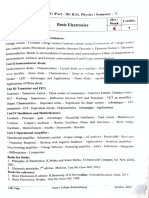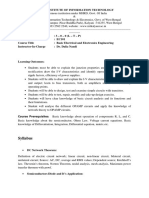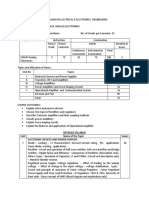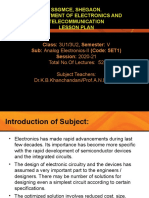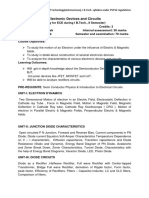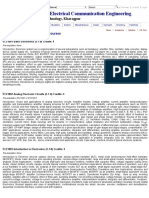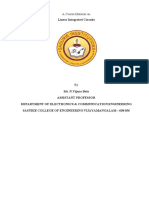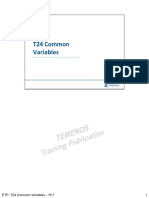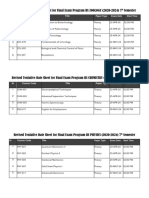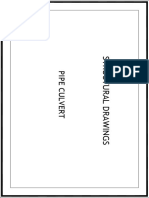0% found this document useful (0 votes)
124 views2 pagesBasic Electronics Engineering Syllabus
The document outlines the syllabus for the Basic Electronics Engineering course taken by Computer Science and Information Technology students. The course covers key topics like semiconductors, diodes, rectifiers, transistors, amplifiers, and operational amplifiers. It aims to teach students about the construction and characteristics of electronic devices, analyzing circuits, and understanding applications of operational amplifiers. The course outcomes are for students to understand semiconductor physics, functions of diodes, transistors and amplifiers, and applications of the OP-AMP 741. Key topics across 5 units include diode theory, rectifiers, bipolar junction transistors, op-amp characteristics and applications of inverting/non-inverting amplifiers.
Uploaded by
kartik shawDEE638Copyright
© © All Rights Reserved
We take content rights seriously. If you suspect this is your content, claim it here.
Available Formats
Download as PDF, TXT or read online on Scribd
0% found this document useful (0 votes)
124 views2 pagesBasic Electronics Engineering Syllabus
The document outlines the syllabus for the Basic Electronics Engineering course taken by Computer Science and Information Technology students. The course covers key topics like semiconductors, diodes, rectifiers, transistors, amplifiers, and operational amplifiers. It aims to teach students about the construction and characteristics of electronic devices, analyzing circuits, and understanding applications of operational amplifiers. The course outcomes are for students to understand semiconductor physics, functions of diodes, transistors and amplifiers, and applications of the OP-AMP 741. Key topics across 5 units include diode theory, rectifiers, bipolar junction transistors, op-amp characteristics and applications of inverting/non-inverting amplifiers.
Uploaded by
kartik shawDEE638Copyright
© © All Rights Reserved
We take content rights seriously. If you suspect this is your content, claim it here.
Available Formats
Download as PDF, TXT or read online on Scribd
/ 2
